WARNING: You must be an advanced user to follow the Fresh Install Windows 11 method for incompatible PCs explained here.
In particular, you must know how to install a system by booting from a USB installation media.
If this isn’t your case, we can do it for you. See our package.
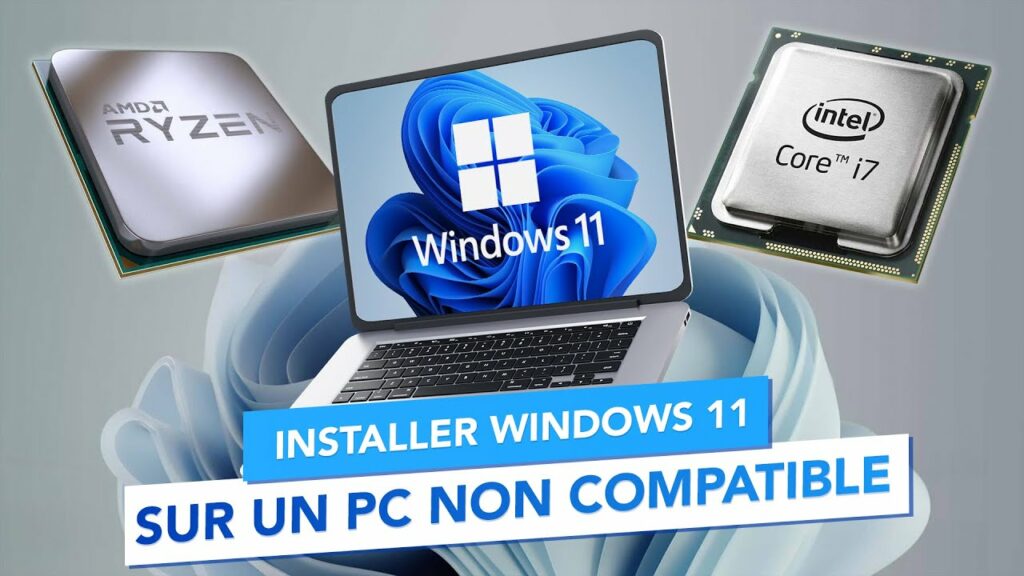
Here are two alternatives for installing Windows 11 from scratch on an incompatible computer: choose your favorite or the one that works best for you.
In any case, when the installation prompts you to select a startup disk, if you have multiple disks, make sure to identify which one contains your Windows system.
On the Windows system disk, you will need to erase all partitions until you have a single unallocated space on the entire disk before continuing.
Fresh install Windows 11 incompatible PC hybrid USB key
First of all, you need a Windows 10/11 hybrid USB installation media which you will create by following this page except step 6.
You’ll then perform a fresh install of Windows 11 on an incompatible PC, simply by proceeding as you would for a Windows 10 installation, booting from the installation key.
Then proceed to the finalization section below.
Fresh install Windows 11 on incompatible pc on the fly
Create a Windows 11 installation USB key.
Boot your PC from this USB drive.
Open Command Prompt by pressing the following keys simultaneously: ⇧ Maj and F10.
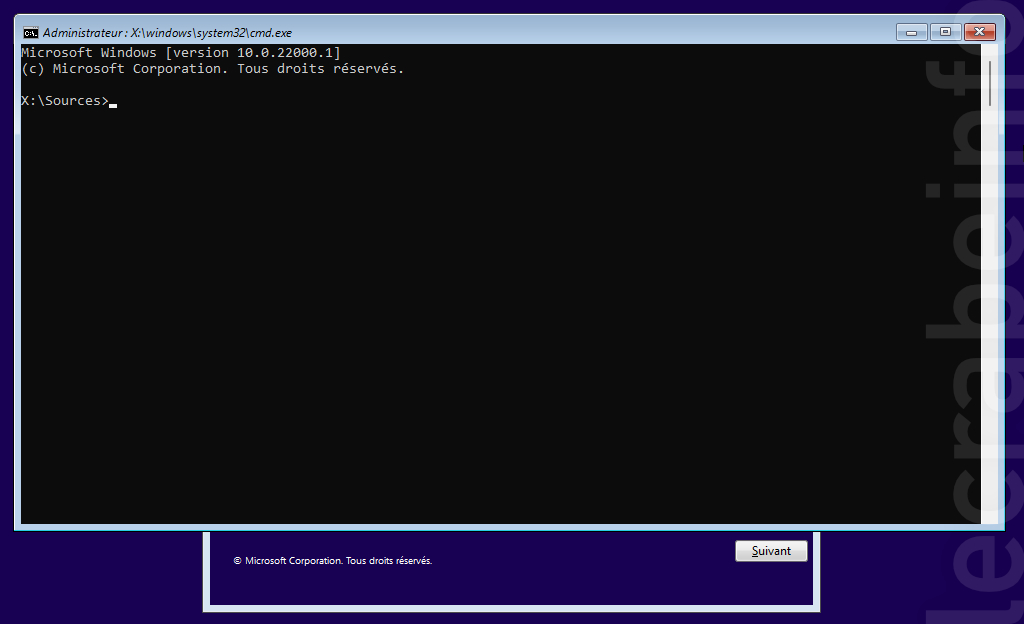
Type regedit then Enter to open the registry editor
Navigate to HKEY_LOCAL_MACHINE\SYSTEM\Setup
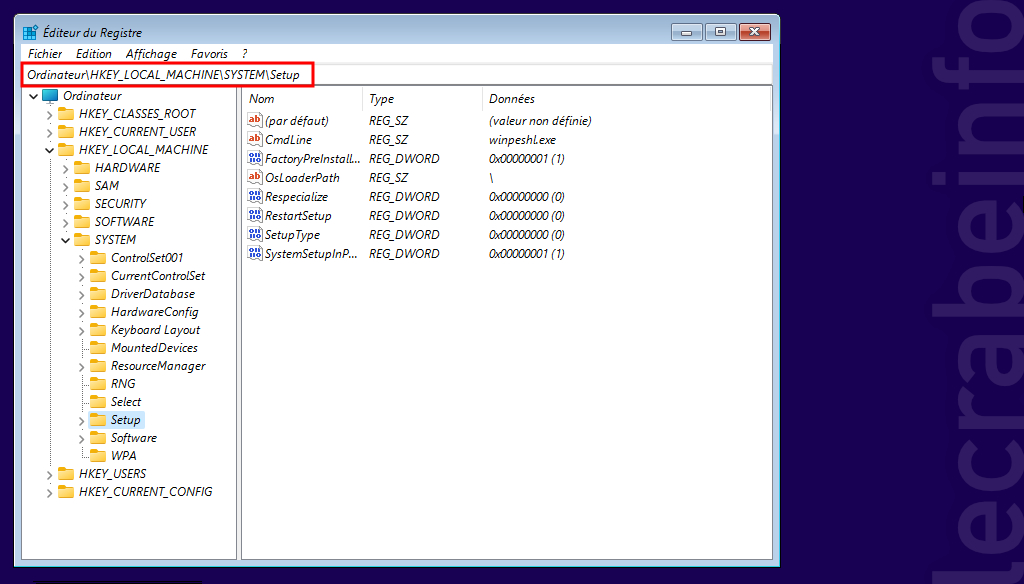
Right-click on the Setup key > New > Key.
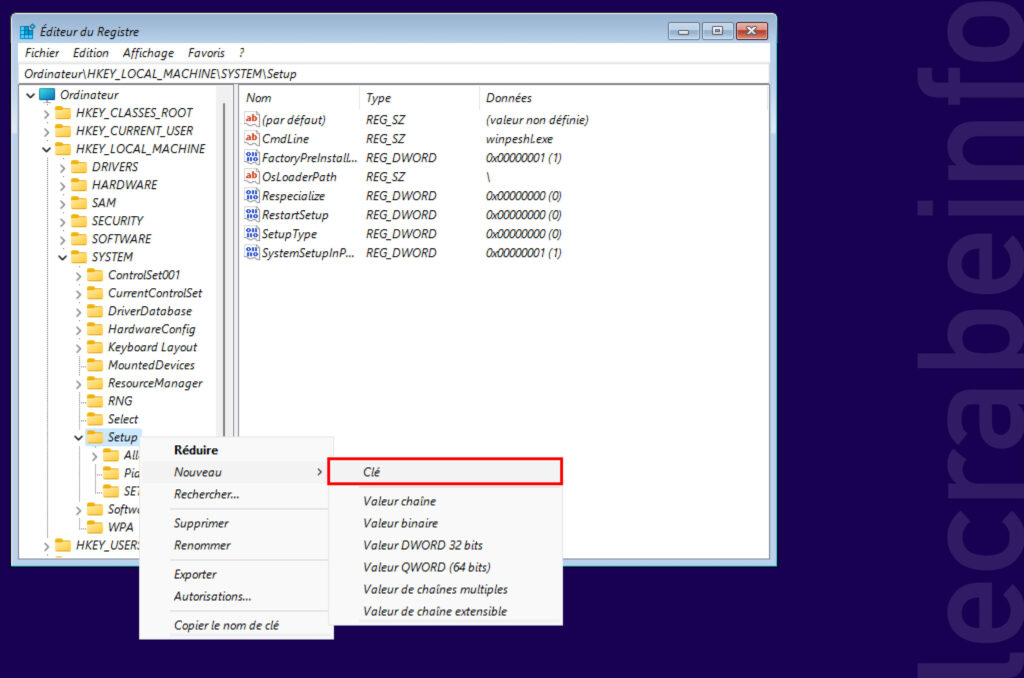
Name the key LabConfig.
Right-click on the LabConfig key> new > 32-bit DWORD value
Name this value BypassTPMCheck and assign 1 then Enter (This value will disable TPM 2.0 verification).
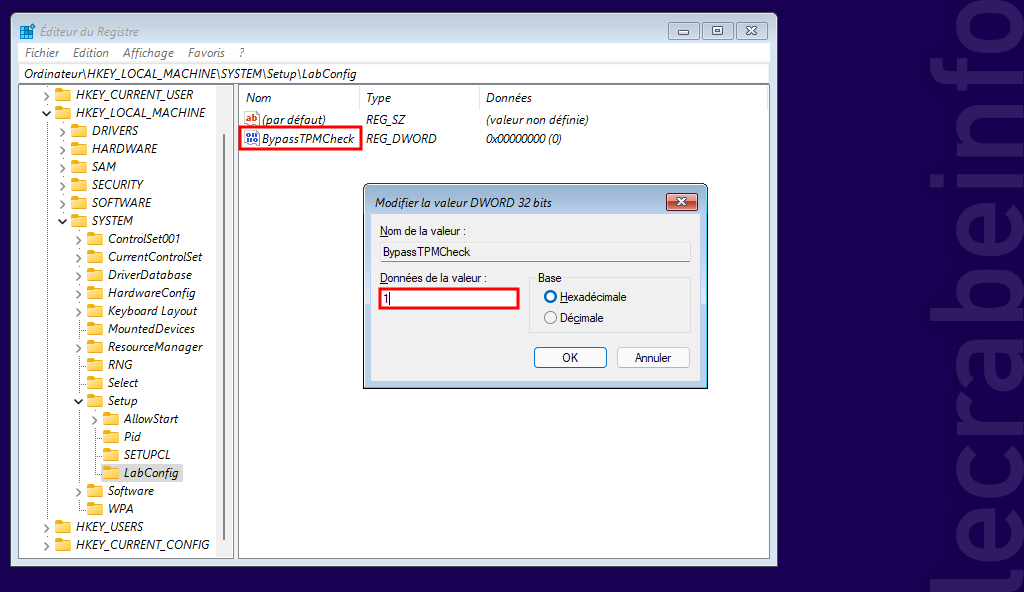
Similarly, if your PC doesn’t have secure boot, create a new BypassSecureBootCheck value and set the value to 1.
Similarly, if your PC has less than 4GB of memory, create a new BypassRAMCheck value and set the value to 1.
Close the Registry Editor and then the Command Prompt.
You can now simply continue installing Windows 11 on an incompatible computer.
Fresh install Windows 11 on incompatible pc finalization
The PC may then crash due to incompatible drivers. To check this, you’ll need to start Windows 11 in Safe Mode. If it’s stable, it’s definitely a driver issue.
If possible, you’ll need to get the most recent drivers for your PC, or check the hardware-related services launched at startup and disable them one by one to find the culprit.
Sometimes the forced installation isn’t complete; in particular, Windows Security Center doesn’t work properly, and the Security Center icon doesn’t appear. Check with Settings > Privacy & Security > Windows Security > Open Windows Security. If nothing appears, this is the case. If you experience this or other operating issues, it’s recommended to perform an in-place installation again.
So, let’s configure Windows 11 to accept reinstallations on incompatible hardware:
- In the Start menu search field, type regedit.
- Open the Registry Editor.
- Expand the following key: HKEY_LOCAL_MACHINE\SYSTEM\Setup\MoSetup
- Click the Edit menu, click New, and then click DWORD (32-bit) Value.
- Name the new value AllowUpgradesWithUnsupportedTPMOrCPU and double-click it.
- Type 1 in the Value data field and confirm.
- Close the Registry Editor.
Then
Create a folder for example C:\ESD\WIN11
In this folder, create the file skip_tpm_check.txt and then copy and paste this script skip_tpm_check.txt
Rename this file to skip_tpm_check.cmd.
Right-click on skip_tpm_check.cmd and run as administrator.
We will now perform an in-place installation.
The Windows 11 media creation tool is located here.
The wizard is not the right solution in our case: instead, choose to download the ISO image suggested further down the Windows 11 page.
Then, mount the Windows 11 ISO (in Windows 10, a double-click is sufficient) and run setup.exe.
Note: If the setup program displays « Windows Server Installer, » ignore it.